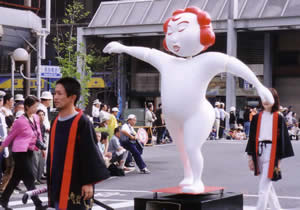Ilankai Tamil Sangam28th Year on the Web Association of Tamils of Sri Lanka in the USA |
|||
 Home Home Archives Archives |
The Losers on January 26, 2010by Sachi Sri Kantha, January 31, 2010
Alfred North Whitehead (1861-1947), the English mathematician turned philosopher, noted in 1954 that “There are no whole truths; all truths are half-truths. It is trying to treat them as whole truths that plays the devil.” How true it seems in the aftermath of the Sinhalese presidential election that was held on January 26, 2010. As far as the sentiments of Eelam Tamil voters are concerned, here is my list of who lost on that day. 1. President Mahinda Rajapaksa 2. Tamil sycophants, quislings and turncoats (Douglas Devananda, Vinayagamoorthy Muralitharan aka Karuna aka Kokila Gunawardena, Pillaiyan, and V. Anandasangaree) of President Rajapaksa. 3. R. Sampanthan and Co. 4. RAW tacticians and pundits of neighboring India. Tamil voters in the Northern province (convincingly) and Eastern province (to a reasonable proportion) have shown President Rajapaksa that they are not willing to eat the political baloney served up by his sycophants, quislings and turncoats. By badmouthing the LTTE and its leader Prabhakaran, President Rajapaksa could poll only 72,894 votes (a mere 7.37%) of registered electors (total 988,334) in the Northern province. In Jaffna district, the polling percentage (25.66%) was the weakest. Vanni district had 40.33% of polling. The tune of ‘East is separate from North’ baloney of Karuna and Pillaiyan soured on the Tamil voters in Batticaloa, Trincomalee and Digamadulla districts. Here is a breakdown of the votes polled by President Rajapaksa and Sarath Fonseka in the five electoral districts that constitute the North and East of Sri Lanka. Jaffna District Registered electors: 721,359. Total polled 185,132 (25.66%):
Vanni District Registered electors: 266,975. Total polled 107,680 (40.33%):
Batticaloa District Registered electors: 333,644. Total polled 216,287 (64.83%):
Trincomalee District Registered electors: 241,133. Total polled 164,504 (68.22%):
Digamadulla (formerly Amparai) District Registered electors: 420,835. Total Polled 309,474 (73.54%):
A study of the all-knowing lapdog editorialist of The Hindu (Chennai, Jan. 28, 2010) daily entitled “Sri Lankan denouement” reveals some hilarity. While paying his homage to the re-elected Naked Emperor Mahinda Rajapaksa with the accolade “17.73 percentage point margin of win is a reaffirmation of the maturity and good sense of ordinary voters”, this editorialist heaped scorn on the losing challenger Sarath Fonseka with choice words such as “he crossed the lines and betrayed vaingloriousness, chauvinism, foot-in-the-mouth disease symptoms, and hints of political ambition.” Suppose if the victor on January 26th was Sarath Fonseka and the loser was President Rajapaksa, there is no doubt, this lapdog editorialist would have used the same choice words to President Rajapaksa as well. Also note that this particular Hindu editorialist made specific mention of those who supported the challenger Fonseka: “the combined forces of the Opposition – the centre-right United National Party, the ultra-left Janatha Vimukthi Peramuna, the As usual, for the umpteenth time, The Hindu editorialist hoped that “a just and sustainable political solution to the Tamil question based on genuine devolution of power within a united Sri Lanka, and revitalisation and development of the war-ravaged areas of the North” will become a reality in the next six years – that is, before 2016. The same hopes had been expressed by the past editors of The Hindu daily in 1982, 1988, 1994, 1999 and 2005, after all the Sinhalese presidential elections. One should be a fool to keep hoping like the Tamil idiomatic, idiotic parrot that waited for the cotton fruit to ripen [i.e., ‘Ilavu kaatha KiLi’]. Maybe the Hindu scribes - nutured on feeding lapdog fashion - can afford to wait, but not the Eelam Tamils! *****
| ||
 minor league Sri Lanka Freedom Party (Mahajana wing), and the pro-LTTE Tamil National Alliance.” One particular name was selectively omitted from this listing – that of President Rajapaksa’s predecessor Madam Chandrika Kumaratunga, who was a dear darling to The Hindu editorialist, when she was in power. Also intentionally omitted out in the analysis of this editorial were the Tamil sycophants, quislings and turncoats, who have been promoted vehemently by the Hindu lobby as alternate Tamil political leadership. Those Eelam Tamils who voted on January 26th proved defiantly that they don’t want to be led by selfish slaves of Indian mandarins and Sinhalese politicians.
minor league Sri Lanka Freedom Party (Mahajana wing), and the pro-LTTE Tamil National Alliance.” One particular name was selectively omitted from this listing – that of President Rajapaksa’s predecessor Madam Chandrika Kumaratunga, who was a dear darling to The Hindu editorialist, when she was in power. Also intentionally omitted out in the analysis of this editorial were the Tamil sycophants, quislings and turncoats, who have been promoted vehemently by the Hindu lobby as alternate Tamil political leadership. Those Eelam Tamils who voted on January 26th proved defiantly that they don’t want to be led by selfish slaves of Indian mandarins and Sinhalese politicians.